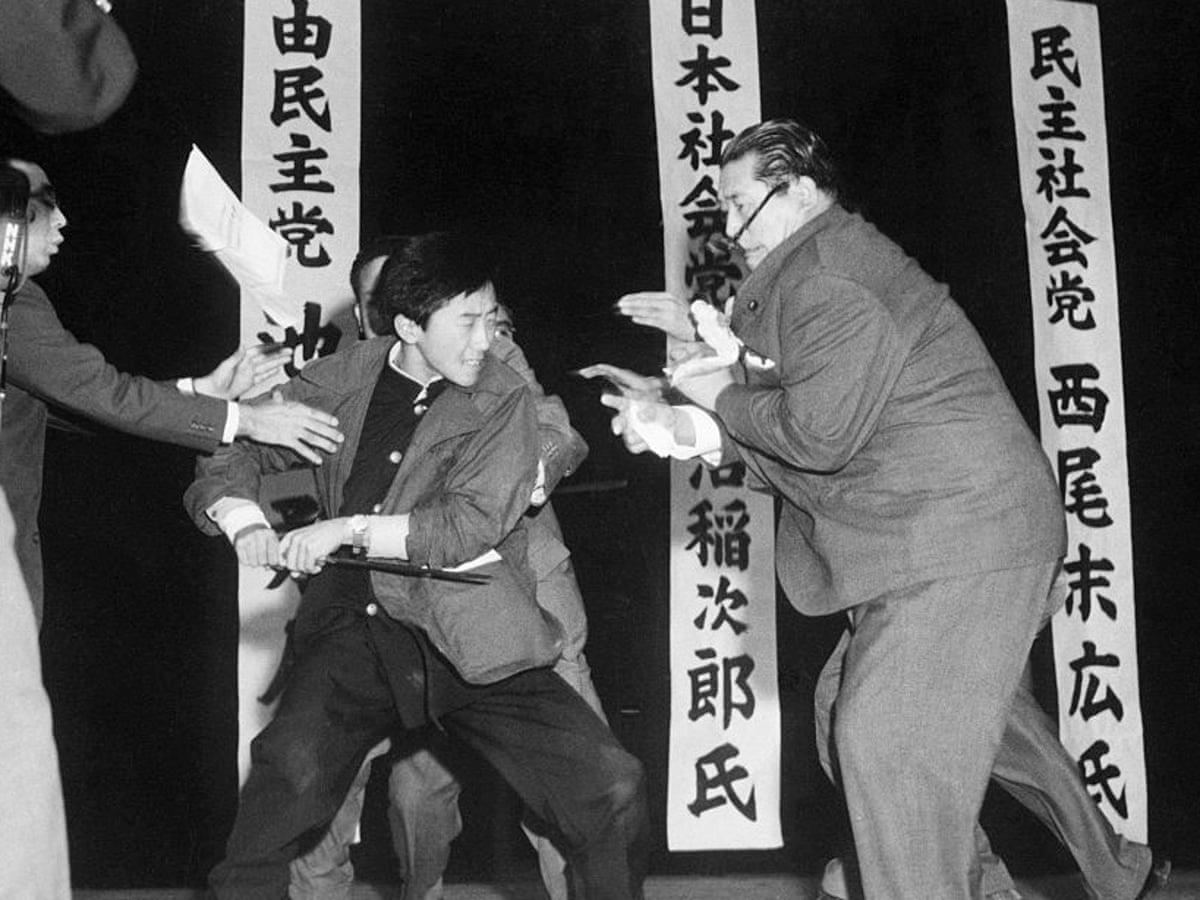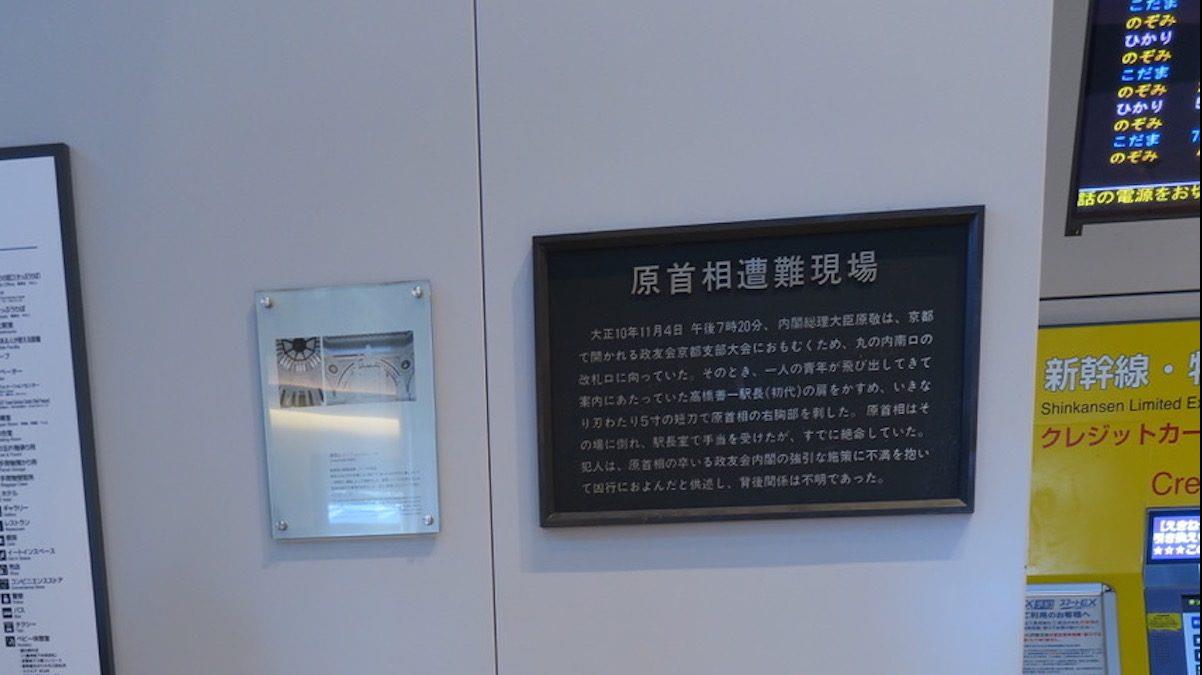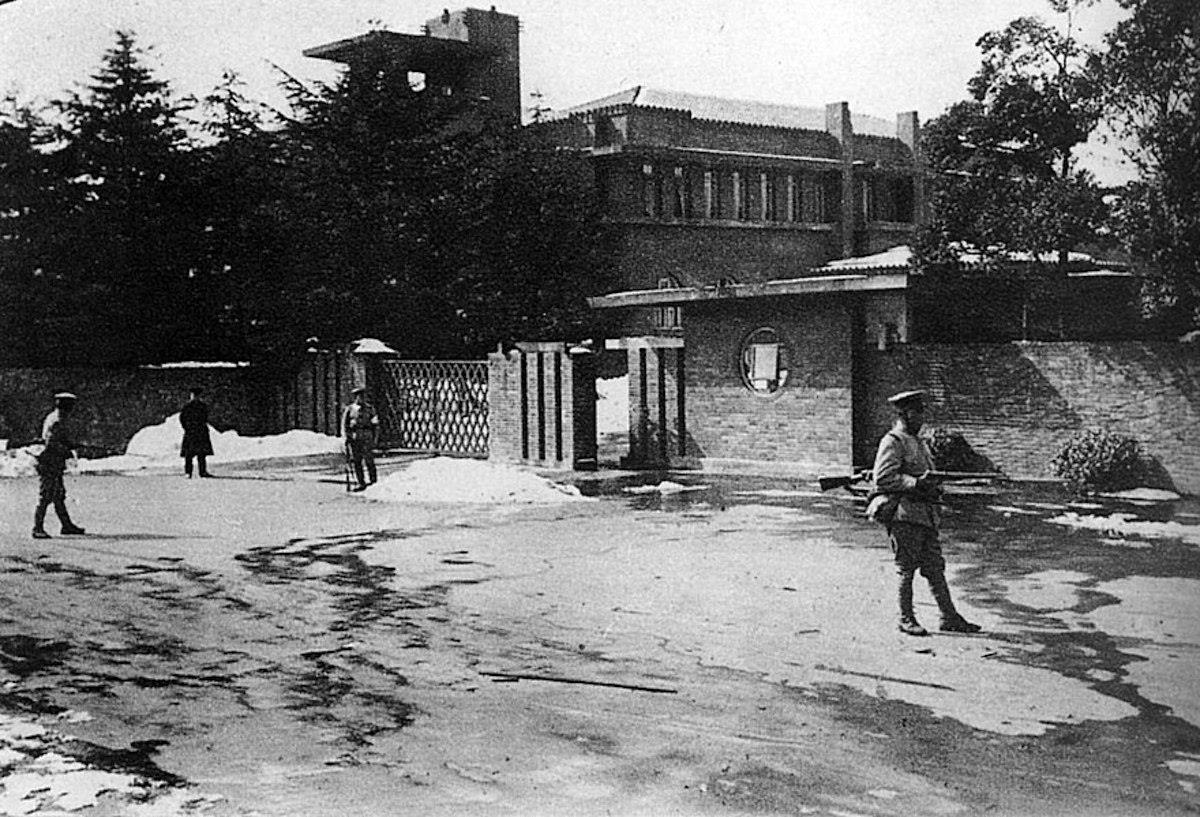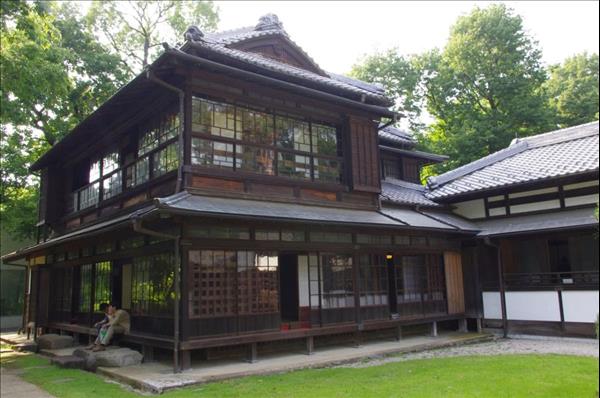
A Guided Historical Tour Of Tokyo Assassination Sites
In the autumn of 1994, I was invited to attend a symposium on the problems of guns in society. Held at the venerable Hibiya Public Hall adjacent to Hibiya Park, the program featured opening remarks by Prime Minister Tomiichi Murayama, followed by a panel discussion.
Then-United Press International bureau chief Glenn Davis, a native Texan, had been enlisted to offer the American viewpoint. When Davis's turn came to speak, he began by saying,“I feel a little strange talking about guns when, close to this very spot, Asanuma was assassinated with a sword.”
Davis's remark produced an audible reaction from the audience, who were reminded that on the afternoon of October 12, 1960, as Prime Minister Hayato Ikeda looked on, a rival, Socialist Party Chairman Inejiro Asanuma, was fatally stabbed on the stage by a 17-year-old student wielding a samurai sword.

Seventeen-year-old Otoya Yamaguchi uses a foot-long sword to kill Japan Socialist Party leader Inejiro Asanuma, on a public stage in Tokyo, October 12, 1960. Photo: Wikipedia / Yasushi Nakao / Mainichi Shimbun
Davis had researched the case and had some questions about it, as he noted in an email to me:
Three weeks after Asanuma's murder, Yamaguchi fashioned a rope from his bedsheet and hanged himself from a light fixture in his cell. On the wall, he'd used an amalgam of tooth powder and water to write“Long live the Emperor” and“Would that I had seven lives to give for my country.”

Yamaguchi's bloody act is still venerated by Japanese rightists, who regularly visit his grave at a temple in Tokyo's Aoyama district, to offer prayers and place fresh flowers. Photo: Mark Schreiber
Fifty years to the minute of Asasuma's assassination – at 3:03 p.m. on October 12, 2010 – a right-wing group held a ceremony on the stage of Hibiya Public Hall to commemorate Yamaguchi's act. In a parallel universe, it would be akin to the Sons of Confederate Veterans renting out Ford's Theater on April 14 to honor John Wilkes Booth.

Hibiya Public Hall. Photo: Wikipedia
The Asanuma incident was by no means Japan's last political assassination, or assassination attempt, before Friday's slaying of former prime minister Shinzo Abe.
But by virtue of its being recorded by an NHK TV crew, and owing to Mainichi Shimbun photographer Yasushi Nakao's dramatic shot showing the mortally wounded Asanuma – his hands positioned in a futile attempt to foil Yamaguchi's second thrust – it was without a doubt the most sensational.
A surprising number of memorials and monuments to the victims of assassinations can be found in Tokyo. In some cases, memorials honor the perpetrators as well.
On March 24, 1860, a century before Asanuma was cut down, the Tairo (great elder) Naosuke Ii, Japan's most powerful official, was approaching the Sakuradamon gate of the palace when his retinue was attacked by a troupe of 17 shishi (men of high purpose) from the Mito domain and one from Satsuma.
During the bloody melee, Ii, age 44, was pulled out of his palanquin and decapitated.

The Sakuradamon Gate, where Tairo Ii Naosuke was murdered by Mito samurai during a snowstorm in March 1860. Photo: Mark Schreiber
Two years earlier, Ii had ordered the Ansei Purge, jailing, exiling and in some cases executing 100 individuals accused of conspiring against the Tokugawa government. The killers also objected to Ii's having negotiated, and in July 1858 signed, the Treaty of Amity and Commerce between Japan and the United States as well as subsequent treaties with European powers.
Nearly a quarter of Romulus Hillsborough's 2017 work, Samurai Assassins:“Dark Murder” and the Meiji Restoration, 1853-1868, is devoted to the circumstances surrounding the Sakuradamon Incident.
In 1909, an imposing statue of Ii was erected on a hilltop in Kamonyama Park in the city's Nishi Ward on the 50th anniversary of the Yokohama port's opening. Ii's killers also have a monument, at the Atago Shrine in Tokyo's Minato Ward, where they assembled before their attack.
Foreigners were frequently targeted by xenophobic samurai after the signing of the Convention of Kanagawa in March 1854 and the subsequent opening up of treaty ports around Japan.
On the night of January 14, 1861, the Japanese interpreter of US Ambassador Townsend Harris, 28-year-old Dutch-born Henry Heusken, was returning on horseback from a dinner with a Prussian official when he was attacked by a group of shishi from the Satsuma domain at the Nakanohashi bridge near Azabu Juban.

The murder of Henrry Heusken. Photo: Wikidata
Heusken managed to flee to the nearby American Legation, but the sword cuts left him eviscerated and, shortly after midnight, he was pronounced dead. His killers were never brought to justice. He left behind a Japanese wife and a child.
A plaque previously identifying the assassination site at Nakanohashi has been removed, but a newer sign in Japanese has been posted outside Korinji temple, close to the French Embassy, where Heusken's grave can be visited in the temple's cemetery.
The sword remained assassins' weapon of choice well into the 20th century. In his 1921 memoir, A Diplomat in Japan, Sir Ernest M. Satow (1843-1929) described what happened to French army Lieutenant Henri J J Camus at Idogaya in Yokohama on October 14, 1863:
A decade into the Meiji Restoration, on May 14, 1878, the carriage of Lord of Home Affairs Toshimichi Okubo was attacked by a group of samurai from the former Kaga domain (now Ishikawa Prefecture). The 47-year-old Okubo, a native of Satsuma (now Kagoshima) and regarded as one of the three great nobles who effectuated the Meiji Restoration, was cut to ribbons and died on the spot.
The monument to Okubo and an explanatory bilingual signboard are situated in Shimizudani Park in Kiyoicho, directly across the street from the Hotel New Otani.

Monument to Tochimichi Okubo at the site of his assassination in Tokyo's Chiyoda Ward. Photo: Mark Schreiber
The outbreaks of 19th century political violence were to continue during the first three and a half decades of the 20th century, chipping away at the underpinnings of the Taisho Democracy – not unlike concurrent events in Weimar Germany. Indeed, the list of plots, assassination attempts and successful assassinations reads like a veritable Who's Who of Japan's oligarchs, politicians and business leaders.
They include the heads of the Yasuda and Mitsui zaibatsu, Zenjiro Yasuda (1921) and Takuma Dan (1932), and army Major General Tetsuzan Nagata, head of the Military Service Bureau (1935). Two others – Yomiuri Shimbun publisher Matsutaro Shoriki (1935) and constitutional scholar Tatsukichi Minobe (1936) – were wounded but survived.
Each day, thousands of people walk, in most cases unknowingly, past two monuments in Tokyo Station. Few pause to contemplate the wall plaques and floor markers designating the spots where the assassinations occurred.
A plaque under the rotunda of the Marunouchi South Exit indicates where Prime Minister Takashi Hara (65) was stabbed to death by a railway worker on November 4, 1921.
A second, mounted on a pillar close to the wicket of the Tokaido Shinkansen, indicates the spot where, on November 14, 1930, Prime Minister Osachi Hamaguchi was shot by a member of an ultra-nationalist secret society.
Hamaguchi had infuriated opponents of the London Naval Treaty, which he had supported as an austerity measure to deal with Japan's economic crisis. He lived for nine more months before dying, aged 61.

Wall plaques identify the sites of the assassinations of two prime ministers, Hara and Hamaguchi, inside Tokyo Central Station. Photo: Mark Schreiber
In 1943, veteran journalist Hugh Byas (1875- 1945), a Scot who for several decades reported from Tokyo for The Times of London and The New York Times, published Government by Assassination. This is how Byas summarized the evolution of political assassinations:
On May 15, 1932, 11 junior naval officers stormed into the office of Prime Minister Tsuyoshi Inukai. Their leader exclaimed,“Dialogue is useless!” before opening fire and killing him.
Reporting on Inukai's assassination, Byas wrote:“The man in the street was startled but not alarmed. A Japanese neighbor was a little amused by my excitement. 'The Japanese people will not be very angry about the Prime Minister's murder,' he said. 'Many of us think the politicians needed a lesson.'”
On February 26, 1936, some 1,500 soldiers belonging to the army's Imperial Way faction launched a bloody uprising to demand a“Showa Restoration,” Showa being the name of Emperor Hirohito's reign era.
At the prime minister's residence, rebel officers mistook army General Denzo Matsuo for Prime Minister Keisuke Okada and executed him by machine gun. (Okada escaped by hid- ing in a closet, but he resigned 12 days later.)

Rebels outside the Prime Minister's Residence during the February 26 Incident. Photo: The Reader Wiki
Lord Keeper of the Privy Seal Makoto Saito was killed at his home in Yotsuya. General Jotaro Watanabe, inspector general of military training, was machine-gunned at his home in Ogikubo as his wife and daughter looked on.
Of four important figures assassinated that day, 81-year-old Minister of Finance Korekiyo Takahashi had previously served as president of the Bank of Japan and prime minister. At gunpoint, a servant led two officers into his bedroom, where they killed Takahashi as he slept.
Takahashi's former residence became a memorial park next to the Canadian Embassy in Aoyama. The house in which he was slain was rebuilt at the Edo-Tokyo Open Air Architectural Museum in Koganei City.
The dark histories surrounding the Prime Minister's Office and neighboring residence have not escaped the notice of contemporary politicians. Former Prime Minister Junichiro Koizumi reportedly arranged for a Shinto priest to perform an exorcism.
Two recent prime ministers, Shinzo Abe and his immediate successor, Yoshihide Suga, simply refrained from moving into the residence. Abe didn't mention ghosts as a reason for commuting to his office from his private home in Shibuya's Tomigaya neighborhood. He simply said,“I can rest and recharge my batteries at home.”
Considerable outlays for renovations and maintenance notwithstanding, the building remained unoccupied from 2012 until late last year, when Suga's replacement, current Prime Minister Fumio Kishida, moved in with his family.
A translator, newspaper columnist and book collector, Mark Schreiber is the author of The Dark Side: Infamous Japanese Crimes and Criminals , He arrived in Asia in 1965 and currently resides in Tokyo.
This article originally appeared a year ago in Number 1 Shimbun , the magazine of the Foreign Correspondents' Club of Japan. Slightly updated, it is republished here with kind permission.

Legal Disclaimer:
MENAFN provides the
information “as is” without warranty of any kind. We do not accept
any responsibility or liability for the accuracy, content, images,
videos, licenses, completeness, legality, or reliability of the information
contained in this article. If you have any complaints or copyright
issues related to this article, kindly contact the provider above.


















Comments
No comment